#Valley of Cauca
Explore tagged Tumblr posts
Text
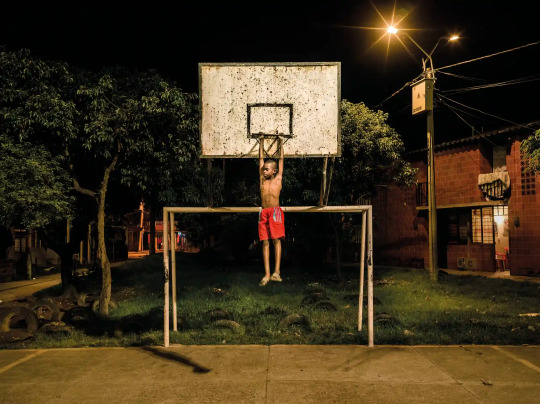
Didiller Angulo, nine, on the basketball court in Potrero Grande. People have only moved to Potrero Grande for about 10 years but the neighborhood is considered one of the most troubled in the country. Extreme poverty, unemployment and lack of opportunities have propelled the area into a downward spiral of widespread drug abuse, deadly violence and deeply rooted social problems. 2018
Photograph: Mads Nissen/Politiken
#Potrero Grande#Santiago de Cali#Aguablanca District#Valley of Cauca#Colombia#Poverty#Melanated#Struggle#Survival
34 notes
·
View notes
Text
78 notes
·
View notes
Text

Olive Carpenter (Colaptes rubiginousus)
Cauca Valley. Colombia
Instagram: @pajariando_ando
Facebook: PAJARIANDO ANDO
(Fotografía De Aves). Fotos: Diego
Jaramillo Rebolledo
65 notes
·
View notes
Text
Amazon Birding Tour
Amazon Birding Tour
Icaro Birding- One-of-a-kind-birding Tours to Colombia and Peru
WELL-PLANNED AND STRESS-FREE BIRDING TOURS TO COLOMBIA AND PERÚ
DISCOVER OUR COLLECTION OF HAND-PICKED TOURS FOR BEYOND-THE-ORDINARY BIRDING ADVENTURE
Icaro Birding creates birding tours to Colombia that are inspiring, well planned, and flawlessly implemented. We strive to deliver a world-class birding & nature experience that maximizes your birding time and relieves you from the stress of organizing a birding tour to the tropics. Whether you are a seasoned world traveler, or planning your first birding experience abroad, let’s find out together why Colombia is a top birding destination and why you should choose birding with Icaro Birding.
Epic Andes Birding tour:
Explore the bird-rich Cauca Valley (+900 species), the Mega-biodiverse Choco Bioregion, and the renowned Coffee Triangle area in Colombia.
Santa Marta Endemics Birding tour:
Be exposed to the highest concentration of continental range-restricted bird species on earth and see the +20 endemic species found in the Santa Marta Mountains.
Bogota & Coffee area Birding Tour:
Join us for a short & convenient, yet mesmerizing birding adventure through Colombia’s Andes!
Magdalena Valley of Magic Birding tour:
If you support the mission of the American Bird Conservancy, this endemic-rich tour explores hotspots in all 3 branches of the Andes range.
Amazon and ‘Llanos’ Birding Tour:
Go after hrd-to-see and weird-looking birds in remote Amazon foothills and Savanna ‘Llanos’ beyond the Andes locations.
Wild Manu Road Peru Birding tour:
Spectacular Peru has much to offer from world-famous ancient civilizations to leading fusion gastronomy.
Plan a Private Birding Adventure
Talk directly to Giovani, our CEO and craft together the perfect birding tour for you and your birding friends.
Flexible Dates and curated experiences
We look forward to meet and exceed your birding expectations.
0 notes
Text
birding tours to Colombia
birding tours to Colombia
Icaro Birding- One-of-a-kind-birding Tours to Colombia and Peru
WELL-PLANNED AND STRESS-FREE BIRDING TOURS TO COLOMBIA AND PERÚ
DISCOVER OUR COLLECTION OF HAND-PICKED TOURS FOR BEYOND-THE-ORDINARY BIRDING ADVENTURE
Icaro Birding creates birding tours to Colombia that are inspiring, well planned, and flawlessly implemented. We strive to deliver a world-class birding & nature experience that maximizes your birding time and relieves you from the stress of organizing a birding tour to the tropics. Whether you are a seasoned world traveler, or planning your first birding experience abroad, let’s find out together why Colombia is a top birding destination and why you should choose birding with Icaro Birding.
Epic Andes Birding tour:
Explore the bird-rich Cauca Valley (+900 species), the Mega-biodiverse Choco Bioregion, and the renowned Coffee Triangle area in Colombia.
Santa Marta Endemics Birding tour:
Be exposed to the highest concentration of continental range-restricted bird species on earth and see the +20 endemic species found in the Santa Marta Mountains.
Bogota & Coffee area Birding Tour:
Join us for a short & convenient, yet mesmerizing birding adventure through Colombia’s Andes!
Magdalena Valley of Magic Birding tour:
If you support the mission of the American Bird Conservancy, this endemic-rich tour explores hotspots in all 3 branches of the Andes range.
Amazon and ‘Llanos’ Birding Tour:
Go after hrd-to-see and weird-looking birds in remote Amazon foothills and Savanna ‘Llanos’ beyond the Andes locations.
Wild Manu Road Peru Birding tour:
Spectacular Peru has much to offer from world-famous ancient civilizations to leading fusion gastronomy.
Plan a Private Birding Adventure
Talk directly to Giovani, our CEO and craft together the perfect birding tour for you and your birding friends.
Flexible Dates and curated experiences
We look forward to meet and exceed your birding expectations.
0 notes
Text
birdwatching tours to Peru
Icaro Birding- One-of-a-kind-birding Tours to Colombia and Peru
WELL-PLANNED AND STRESS-FREE BIRDING TOURS TO COLOMBIA AND PERÚ
DISCOVER OUR COLLECTION OF HAND-PICKED TOURS FOR BEYOND-THE-ORDINARY BIRDING ADVENTURE
Icaro Birding creates birding tours to Colombia that are inspiring, well planned, and flawlessly implemented. We strive to deliver a world-class birding & nature experience that maximizes your birding time and relieves you from the stress of organizing a birding tour to the tropics. Whether you are a seasoned world traveler, or planning your first birding experience abroad, let’s find out together why Colombia is a top birding destination and why you should choose birding with Icaro Birding.
Epic Andes Birding tour:
Explore the bird-rich Cauca Valley (+900 species), the Mega-biodiverse Choco Bioregion, and the renowned Coffee Triangle area in Colombia.
Santa Marta Endemics Birding tour:
Be exposed to the highest concentration of continental range-restricted bird species on earth and see the +20 endemic species found in the Santa Marta Mountains.
1 note
·
View note
Text
Coconuco
The capital of Purace, a municipality in the department of Cauca, Colombia. It is located 30 km. from Popayan, and is part of a volcanic mountain range. It was a nice drive through mountains and valleys. We stopped at a roadside hut to have some fried bread, and white cheese dunked in coffee. It was certainly different.
0 notes
Text
Mancing ikan monster paling ganas
MARCEDRIC KIRBY FOUNDER CEO.
MARCEDRIC.KIRBY INC.
THE VALLEY OF THE VAMPIRES
0 notes
Text
0 notes
Text
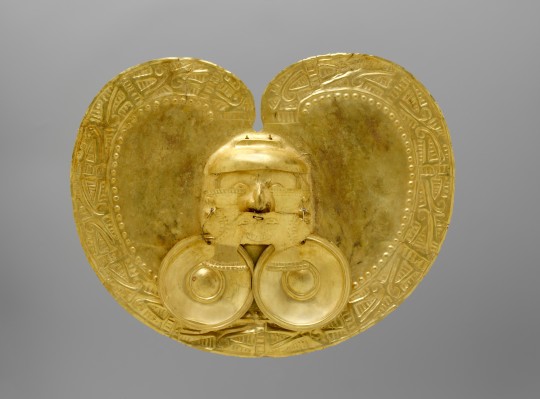
Pectoral with Face
Calima
1st–7th century
A large H-shaped nose pendant almost entirely obscures the face at the center of this gold, kidney-shaped pectoral. Both the shape of the pectoral and the form of the nose pendant are hallmarks of Yotoco-period Calima art. The Yotoco period was the second of three societies—Ilama, Yotoco-Malagana, and Sonso—to successively occupy the Cauca Valley region in west-central Colombia. The three societies are known collectively as the Calima culture.
source
1 note
·
View note
Text
Going to cry bc according to my research, osma pezmuerto would not have corydoras bc theyre not native to at least the cauca river.
#hell hell hell on planet earth death destruction crying#also how has she a fish you need filters for that#is that... just a little miracle#or are they doing automaton stuff in the encanto. does she have wind-up filtration.#where did the goldfishcome from#WHAT FISH ARE NATIVE TO THE QUINDÍO RIVER#encanto#this character will be the death of me#also i want her to be felix's cousin/niece cos then she wouldve hung out w antonio a lot more#but anyway no cories for anne. this movie sucks anyway.#update: quindio leads to la vieja leads to the cauca#if we assume the encanto is indeed in the cocora valley#and not just 'inspired' by it#goddamn wheres this fcking town. do they have corydoras
4 notes
·
View notes
Photo



lime-flask
Cultures/periods: Early Quimbaya
Production date: 500BC-700
Findspot: Cauca Valley
Provenience unknown, possibly looted
Lime-flask in the form of a seated woman holding spiral-shaped attributes in her hands, made in tumbaga by lost-wax casting with core. She is naked, sitting on a four-legged stool, and wears metal helmet, series of ear-rings, nose ornament, necklace and leg-bands. Holes for core-supports appear at the buttocks and shoulders.
British Museum
70 notes
·
View notes
Note
4, 7, 31 (me han encantado los otros random facts de los q has hablado!!)
ay gracias jo 🥺
4. what are you looking forward to?
tbh? nothing 😬 i honestly have no motivation for anything and there's nothing that excites me right now or that i look forward to. now that i think about it my mum told us this year we're gonna go on a cruise for the first time ever to 'celebrate' her being fired last year, but honestly those types of plans never come to fruition in my family so i don't even know if we're gonna do it in the end (for example during the christmas season i asked them to go one (1) day to the sierra to see the mountains and they told me we'd do that and it's february and i haven't seen one mountain; but my sister went with her friends to the sierra like a couple weeks ago 🥴)
7. what was your life like last year?
the first half was okay-ish, i was doing my masters in a new uni and having an internship for the first time in my life in a really cool place... but then summer came, and it all went to shit. i spent the other half of the year mostly at home, fighting administrative shit and being unable to find a job, and just letting anxiety and seasonal depression consume me. so yeah, not a very good year :))
31. 3 random facts
despite what we were told in school, the celtiberii weren't the mix between celts and iberians, but a specific subgroup amongst the celtic tribes along parts of the ebro valley and the iberic system (more or less the southern half of aragón, soria, guadalajara... that area), they were called like that cause they were 'the celts beyond the iber river'. those were the tribes that resisted more the conquest of rome, and that's why they're so well known (you might know about the siege of numantia, one of the darkest events in roman history and a symbol of resistance against imperialist powers)
emporion, now modern ampuriès, was the western-most city state in the ancient greek realm
there were three hispanic roman emperors: trajan, hadrian (both from italica, modern santiponce, in sevilla) and theodosius I (from cauca, modern coca, in segovia). martial, one of the greatest roman poets, who lived between the 1st and 2nd century AD, was also hispanic, he hailed from bilbilis (modern calatayud, in zaragoza).
#ask#i tried to cater the random facts to you i hope you like them :)#also of course the hypothetical cruise would be on the mediterranean there's no other option lol
7 notes
·
View notes
Photo



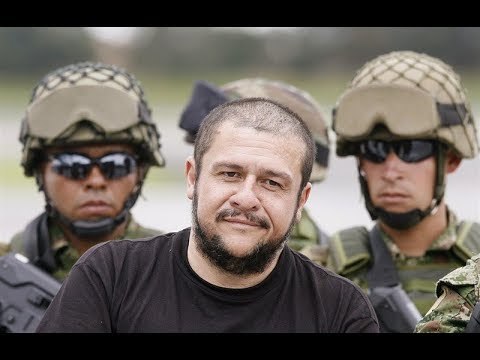


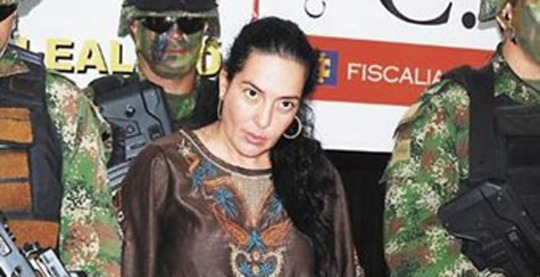
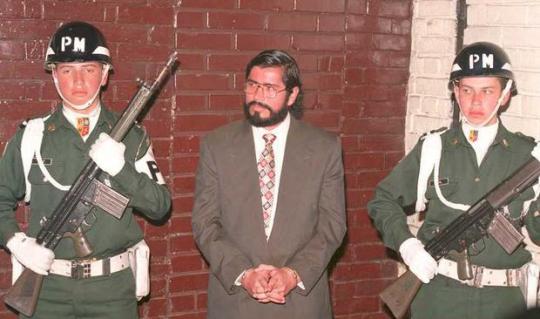
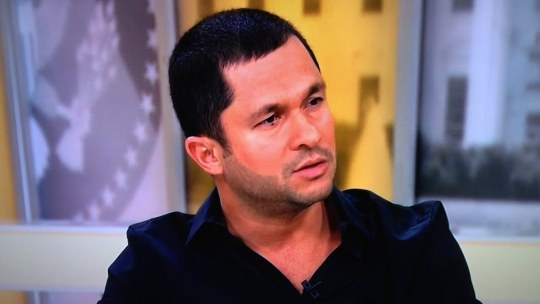
Cartel Norte Valle - Mafia Colombiana
Was a drug cartel that operated principally in the north of the Valle del Cauca department of Colombia, most notably the coastal city of Buenaventura. It rose to prominence during the second half of the 1990s, after the Cali and Medellín Cartels fragmented, and it was known as one of the most powerful organizations in the illegal drug trade. The drug cartel was led by the brothers Luis Enrique and Javier Antonio Calle Serna, alias "Los Comba", until its takedown in 2012 by the authorities of the United States.
It is alleged that the Norte del Valle cartel was formed after an event where the brothers Miguel Rodríguez Orejuela and Gilberto Rodríguez Orejuela, leaders of the Cali Cartel, came to an agreement with the Colombian government that if they surrendered themselves and their organization to the Colombian justice system they would be given perks, such as imprisonment in Colombian prisons for not more than five years and the promise of no expropriation of their substantial assets. It is stated that they organized a meeting with their lieutenants, main subordinates, and junior partners in the business, to inform them that the decision had already been taken to stop all the illicit business immediately. Those members who refused this sudden dissolution, including Carlos Alberto Rentería Mantilla, Juan Carlos Ortiz Escobar, Juan Carlos Ramírez Abadía, Diego León Montoya Sánchez, and Orlando Henao Montoya, formed the North Valley cartel.
ESPAÑOL
El Cartel del Norte del Valle fue el nombre dado por la Administración para el control de drogas (DEA) a la organización que se dedicó al tráfico de droga (cocaína), que operó principalmente en el norte del Valle del Cauca entre los años 1990 hasta 2008, localizándose al suroeste de Colombia. Tuvo un importante crecimiento a mediados de los años 1990, después de que los carteles de Medellín y Cali se fragmentaron, y fue conocida como una de las organizaciones más poderosas dedicadas al negocio de tráfico de droga; se caracterizó por su barbarie, que asoló de violencia las distintas regiones del país, la deslealtad de sus miembros traicionándose unos a otros para favorecer sus intereses personales ya fuese dentro del negocio o ante la justicia norteamericana.
El Cartel del Norte del Valle se formó en 1993 luego de la muerte de Pablo Escobar y la posterior captura de los hermanos Miguel y Gilberto Rodríguez Orejuela, jefes del Cartel de Cali.
Se organizaba una reunión por parte de los jefes del Cartel de Cali, donde el tema principal era el desmonte del negocio del tráfico de drogas en la región. Para lograr unas garantías de sometimiento a la justicia del Gobierno de Colombia y acabar con este negocio ilícito, les habían prometido un máximo de 5 años de cárcel sin que la policía hiciera extinción de dominio sobre sus propiedades. Hubo personas entre los asistentes que no estuvieron de acuerdo con ésta repentina disolución del Cartel de Cali, que compitió contra Pablo Escobar, jefe del Cartel de Medellín. Los asistentes a dicha reunión no llegaron a un acuerdo porque querían seguir con el negocio ilícito y posteriormente fueron estos los que conformaron el llamado Cartel del Norte del Valle.
Esta nueva organización era liderada por Orlando Henao Montoya.
6 notes
·
View notes
Text
Magdalena Valley of Magic Birding Tour
Magdalena Valley of Magic Birding Tour
Icaro Birding- One-of-a-kind-birding Tours to Colombia and Peru
WELL-PLANNED AND STRESS-FREE BIRDING TOURS TO COLOMBIA AND PERÚ
DISCOVER OUR COLLECTION OF HAND-PICKED TOURS FOR BEYOND-THE-ORDINARY BIRDING ADVENTURE
Icaro Birding creates birding tours to Colombia that are inspiring, well planned, and flawlessly implemented. We strive to deliver a world-class birding & nature experience that maximizes your birding time and relieves you from the stress of organizing a birding tour to the tropics. Whether you are a seasoned world traveler, or planning your first birding experience abroad, let’s find out together why Colombia is a top birding destination and why you should choose birding with Icaro Birding.
Epic Andes Birding tour:
Explore the bird-rich Cauca Valley (+900 species), the Mega-biodiverse Choco Bioregion, and the renowned Coffee Triangle area in Colombia.
Santa Marta Endemics Birding tour:
Be exposed to the highest concentration of continental range-restricted bird species on earth and see the +20 endemic species found in the Santa Marta Mountains.
Bogota & Coffee area Birding Tour:
Join us for a short & convenient, yet mesmerizing birding adventure through Colombia’s Andes!
Magdalena Valley of Magic Birding tour:
If you support the mission of the American Bird Conservancy, this endemic-rich tour explores hotspots in all 3 branches of the Andes range.
Amazon and ‘Llanos’ Birding Tour:
Go after hrd-to-see and weird-looking birds in remote Amazon foothills and Savanna ‘Llanos’ beyond the Andes locations.
Wild Manu Road Peru Birding tour:
Spectacular Peru has much to offer from world-famous ancient civilizations to leading fusion gastronomy.
Plan a Private Birding Adventure
Talk directly to Giovani, our CEO and craft together the perfect birding tour for you and your birding friends.
Flexible Dates and curated experiences
We look forward to meet and exceed your birding expectations.
0 notes
Text
In the opening scene of Gabriel Garcia Marquez’ [...] One Hundred Years of Solitude, a mysterious foreigner introduces the residents of a sultry and long-isolated town to the wonders of ice, foreshadowing the region’s integration into global networks of technology and trade. Garcia Marquez’ fiction resembles the techno-origin story of Colombia’s first steam-powered sugar mill, wherein a Russian emigrant by way of San Francisco orchestrated a monumental effort to import Scottish machinery to the Cauca Valley for the milling of cane. Shipped to the Pacific port of Buenaventura, the machinery and equipment then survived an arduous transport by ox and mule through jungles and over mountains en route to the fertile plain along the eastern bank of the Cauca River. The packers had to rebuild roads and fortify bridges to handle the heavy industrial load as they inched across the landscape. The entire haul took two and a half years at enormous cost. With the machinery finally installed on the property of the Manuelita estate,
Don Santiago Eder launched the first industrial production of refined white sugar in Colombia on the “first day of the first month of the first year of the twentieth century.”
Such deeds, mythologized and heroic in their retelling, earned Santiago Eder respect as “the founder” and his sons as “pioneers” in the industrialization of provincial Colombia. Their enterprise, Manuelita, S.A., remained the country’s largest sugar operation for much of the twentieth century.
In 1967, [...] Thompson described the evolution and internalization of disciplined concepts of time as intimately tied to the rise of wage labor in industrializing England. His famous treatise on time serves as a reminder that the rise of industrial agriculture affected a reorganization of cultural and social conceptions of time. [...] As the Manuelita steam-powered machines turned on on the “first day of the first month of the first year of the twentieth century,” the company foretold a self-conscious narrative about the rise of industrial agriculture and modernity in Colombia - a self-representation which contrasts with that of other agricultural endeavors that overlapped in time and in space. [...]
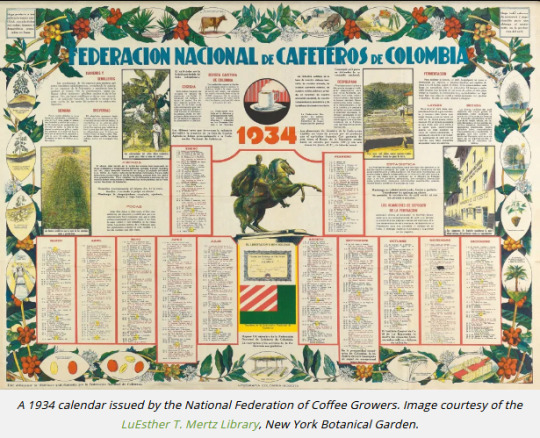
Instructional time [...]
The large size of the calendar issued by the National Federation of Coffee Growers in 1934 suggests its functionality as a wall piece in the homes of middle class cultivators in the country’s mid-altitude coffee axis. [...] This calendar reflects broader trends in Colombian agriculture in the late 1920s and early 1930s, a period of active efforts of state formation in the Colombian countryside. In the late 1920s, the Colombian national state negotiated with departmental governments to create three new agricultural experiment stations. The National Federation of Coffee Growers, as the country’s most important guild and political lobbying organization, took active part in these efforts, and participated in the distribution of seedlings and extension literature. In the calendar, the Federation is patriarchal, instructing the viewer in its cultural and political significance to Colombian identity and prosperity. [...]

Authoritative time [...]
Colombia’s mid-altitude foothills are deeply associated with coffee production in Colombia’s cultural, social, and political imaginary. Likewise, there remains a tendency in Colombia to associate the Cauca Valley lowlands with sugarcane and to assume that this relationship has existed since time immemorial. Such assumptions overlook a much more recent history.
Unlike plantation sugar economies in Brazil and the Caribbean, the industrial production of sugar in Colombia is a twentieth-century phenomenon. Although the Spanish brought sugarcane to the Cauca Valley in the sixteenth century, it remained a relatively small-scale endeavor in the region until the 1930s. [...] The ensuing entrenchment of state-private collaborations between the Palmira station and corporations such as Manuelita [and] [a] new partnership with the United States Department of Agriculture [...] put the valley’s largest sugar growers in a position to [...] distribute and harvest sugarcane hybrids [...]. The 1940s and 1950s thus became a period of disproportionate growth in the refined white sugar sector [...]. The January 1951 image [from the calendar] is especially suggestive of this narrative of confidence and stability. [...] [T]here is a diverse range of people on display, from the company executive at center with sport coat, tie, and sunglasses to Afro-Colombian cane cutters brandishing machetes and other tools. [...] These juxtapositions emphasize both hierarchy and harmony: a modern, smart corporate entity with an educated managerial class and hard-working laborers but also a benevolent corporation seemingly free of labor conflict and unrest. It is a sign of assurance to potential investors in New York City [...]. It is also a moment of (perhaps mandated) convivencia amidst a tumultuous and violent Colombian countryside mere years before major labor strikes gripped the valley’s sugarcane sector.
---
The contrasts evident in these calendars reflect different industries in adjacent regions less than two decades apart, but they also offer contrasting narratives of agricultural futures. Both calendars are patriarchal in the omnipotent ways they depict time and agriculture. [...] Together, these calendars remind us of the Plantationocene as process, one changing over time and following different paths in distinct places or for particular crops. Both discipline the viewer’s internalization of time.
The global ascendency of the Manuelita model of work contracts and monoculture in the second half of the twentieth century underscores the acceleration of the Plantationocene, but the historical presence and persistence of alternative agricultural time should serve as a reminder that [...] futures and the demarcation of epochs are never as simple as a neatly organized calendar.
---
All text above by: Timothy Lorek. “Keeping Time with Colombian Plantation Calendars.” Edge Effects. April 2020. [Images and captions shown as they appear originally published in Lorek’s article. Bold emphasis and some paragraph breaks/contractions added by me.]
#ecologies#ecology#tidalectics#multispecies#geographic imaginaries#temporality#victorian and edwardian popular culture#black methodologies#indigenous#fred moten#indigenous pedagogies#kathryn yusoff
103 notes
·
View notes